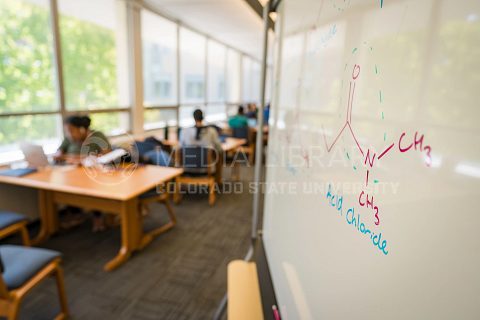Growth mindset, or the belief that intelligence is not a fixed trait but one that can improve, is shown to be positively correlated with student achievement scores (Bostwick, Collie, Martin, & Durksen, 2017; Dweck, 2006). Students’ mindsets can influence how they react to stressful situations, failures and challenges. Having a growth mindset is associated with more adaptive coping and learning strategies after failure. Alternately, a fixed mindset leads students to disengage from their challenges and feel helpless (Dweck & Leggett, 1988). Fortunately, a student’s mindset is malleable. Here are some strategies to help your students change the way they see themselves in relation to challenging coursework.

- Teach students how to use mistakes/failures to their advantage.
- Let students see you make mistakes, then show them how you use those mistakes to learn.
- Struggle with concepts in front of students and allow them to help you work through the process.
- Explicitly talk with students about learning and deliberate practice.
- Discuss and model self-regulation strategies for learning and applying content. (See sidebar.)
- Focus less on competition and performance and more on learning and mastery. Examples include:
- Not grading exams or other assignments based on a normal distribution.
- Allowing students to retake exams or parts of exams to learn from mistakes.
- Allowing students to rewrite papers or redo projects based on feedback provided.
- Having students take exams both individually and in groups.
- Giving students choices in how they demonstrate knowledge and mastery of content.
- Build in different ways for students to demonstrate learning and mastery of content. Examples include:
- Using a variety of assignment types—exams, papers, presentations, videos, etc.
- Letting students choose how they demonstrate their learning within individual assignments (e.g., creating a video, writing a paper, giving a presentation).
- Allowing students to choose whether they work on assignments individually, in groups or with partners.
- Allow for students to fix mistakes and work through problems they’ve encountered so they can see the progress being made.
- Let students know you don’t want perfection. Do this by using words like “learning” and “growing,” rather than “achievement” or “performance.”
Growth Mindset Strategies to Model

- Setting goals and monitoring progress toward those goals.
- Using self-talk effectively to motivate and support active learning.
- Creating time management plans to accomplish goals.
- Invite classroom conversation during stressful points in the semester. Ask students how they are doing and more importantly what they are doing to cope.
- Thinking about your approach, identifying misconceptions, and doing something to fix those misconceptions.
- Becoming aware of your emotions, such as anxiety, and using techniques to address them.
“Mistakes are very important to encourage creativity and exploration when students can learn. Gladly, I make numerous mistakes during my lectures and frequently my students catch them. I prefer a class style where we are all trying to figure out interesting things together.”
Faculty
